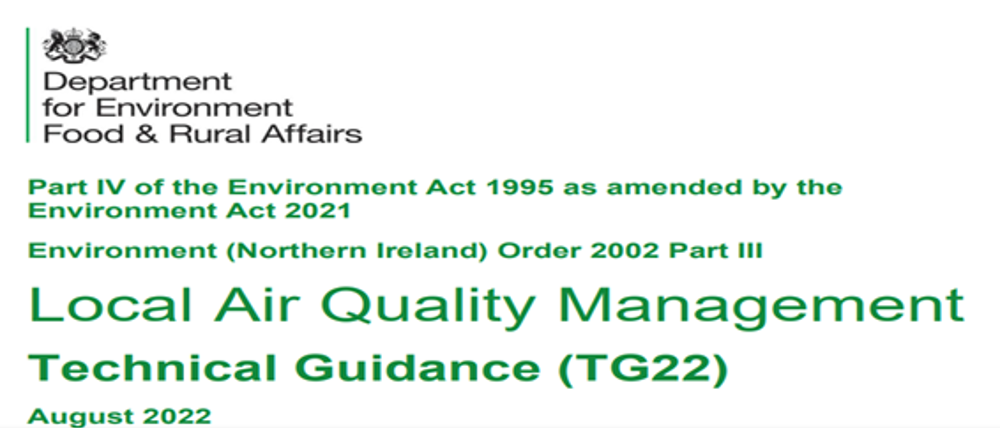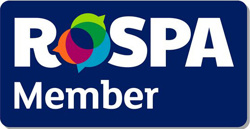The New Technical Guidance by DEFRA has been prepared by the Local Air Quality Management (LAQM) Helpdesk and officially published in August 2022.
The Local Air Quality Management (LAQM) Technical Guidance (TG.22) supersedes all previous versions, the most recent being the April 2021 release of LAQM.TG(16). It is designed to support local authorities in carrying out their duties under the Environment Act 1995 as amended by the Environment Act 2021, the Environment (Northern Ireland) Order 2002, and subsequent regulations.
What is Local Air Quality Management (LAQM)?
LAQM is the statutory process by which local authorities monitor, assess, and take action to improve local air quality. Where a local authority identifies areas of non-compliance with the air quality objectives and there is relevant public exposure, there remains a statutory need to declare the geographic extent of non-compliance as an Air Quality Management Area (AQMA) and to draw up an action plan detailing remedial measures to address the problem. A general introduction to the system is provided in the Policy Guidance documents.
New Technical Guidance LAQM - TG (22)
The driving change behind the new version of the Technical Guidance is mainly to correspond to updates in the latest version of the LAQM Policy Guidance for England (PG.22).
This new version of the Technical Guidance is also the first version since the enactment of the measures in the Environment Act 2021 (the Act) which amend the Environment Act 1995 to strengthen the Local Air Quality Management framework in England to enable greater local action on air pollution.
The Act specifies that the Secretary of State must set a target in respect of the annual mean level of PM2.5 in ambient air and at least one other long-term air quality target which Defra proposes is a target to reduce population exposure to PM2.5.
Local Authorities are required to continue to appraise air quality, with the main emphasis on those pollutants shown to be challenging in respect of compliance – Nitrogen Dioxide (NO2), Particulate Matter (PM10) and (except in Wales) Sulphur Dioxide (SO2). Local Authorities are also required to work towards reducing PM2.5. In Scotland, PM2.5 already has a statutory objective defined which needs to be worked towards. Northern Ireland has still to consider changes to LAQM and continues to work according to the previous regime.
The current version of the Technical Guidance also includes the findings from updated studies on the relationship between annual and hourly NO2 and the relationship between PM10 and PM2.5 to allow for Local Authorities to make screening assumptions around these elements of reporting
While the main changes within this version of the technical guidance are in relation to new English Policy Guidance, the Welsh, Scottish and Northern Irish Devolved Administrations have provided inputs and included updates throughout, where relevant.
Please note that the new Technical Guidance LAQM - TG (22) is applicable to the whole of the UK but excludes London, where a London Specific guidance document, applicable to London’s 32 boroughs (and the City of London) is currently adopted as an alternative - LLAQM.TG (19).
Key updates within LAQM.TG(22)
The key updates within LAQM.TG(22 ) include:
- “Updated section relating to process for consultation, steering groups and engaging with Relevant Public Authorities (RPAs) to support the updated Policy Guidance in producing Air Quality Action Plans to the required standard.
- In England and Wales, the Fast-track option has been removed and now authorities must declare an AQMA within 12 months of an identified exceedance or risk of exceedance. The flow chart detailing the process for declaring, amending and revoking AQMAs has been updated in light of these changes.
- Updated study on assumptions for exceedances of short term NO2 objectives. The updated study has affirmed the existing assumption that, at concentrations above 60µg/m³ as an annual average, there is the potential for exceedances of the 1-hour objective.
- Updated study on relationship of PM10 and PM2.5 for the purpose of estimating PM2.5 concentrations where only PM10 monitoring is available. Going forward, two separate factors will be calculated on an annual basis for background and roadside sites by analysing data from the AURN.
- From 2023 in England, Local Authorities are required to produce an Air Quality Strategy where they have no declared AQMAs.
- A worked example of model verification for modelling of road emissions.
- Clarified section on diffusion tube deployment and siting.
- Discussion around use of diffusion tubes with wind caps, including the process for bias adjustment for these different tube types.
- Further clarity is provided for completion of source apportionment where detailed modelling has not been completed.
- Inclusion of potential mitigation processes for non-transport sources.”
If your project requires an Air Quality Assessment or if you are interested in finding out how Mayer Brown Ltd can help you with any of your Air Quality needs throughout the planning process, please contact Lucinda Pestana lpestana@mayerbrown.co.uk.







